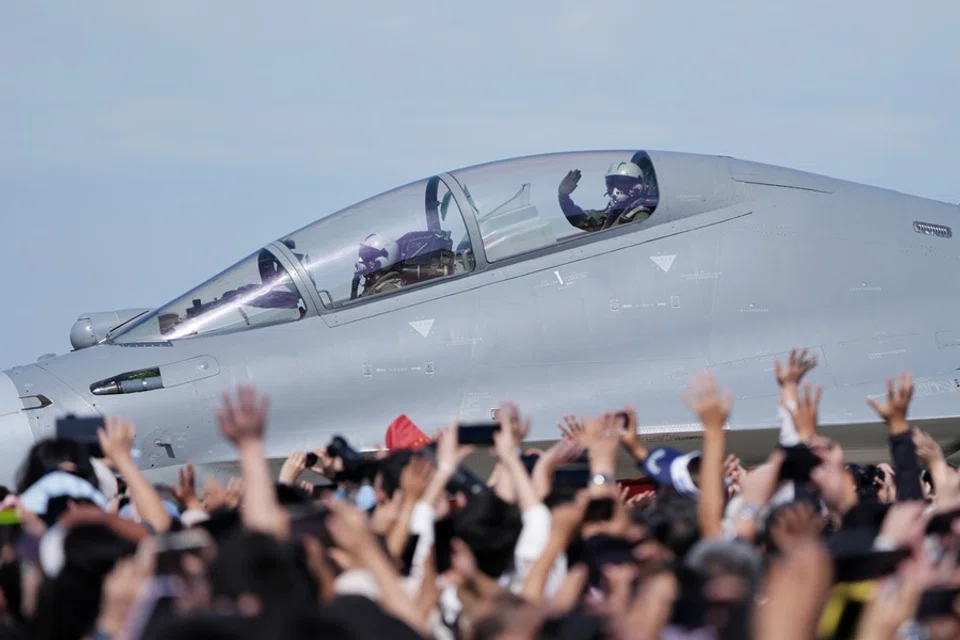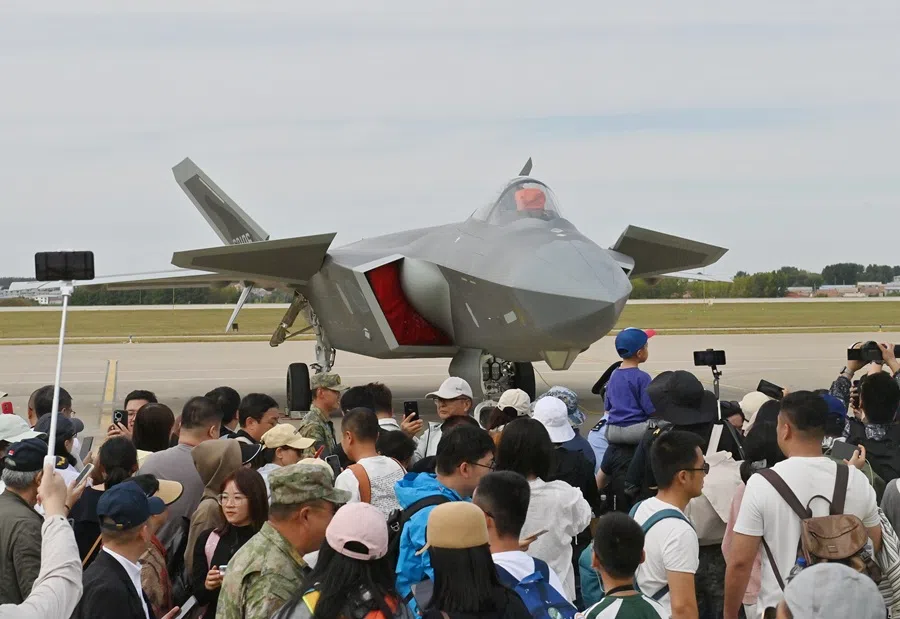From parade to power: Is China rewriting the rules of naval warfare?
Not long since the 3 September military parade, China stuns the world again during the Changchun Airshow. Lianhe Zaobao correspondent Yu Zeyuan takes a look at the highlights and what it means for China’s military might.

From the grand military parade on 3 September to the Changchun Airshow, and then the official announcement on 22 September that the Fujian aircraft carrier had successfully catapult-launched three types of carrier-based aircraft, the rapid advancements in China’s military technology have stunned the world and turned September into a month of celebration for Chinese military enthusiasts.
Although it was widely expected that China would unveil new equipment during the 3 September military parade, the appearance of strategic “weapons of war” like the Dongfeng-61, Jinglei-1 and Julang-3, along with the Type 100 tank, laser and microwave weapons, various hypersonic missiles and large unmanned combat aircraft, still left many military enthusiasts stunned — and reshaped Western analysts’ understanding of China’s weaponry.
Stealth fighters and unmanned aircraft on display
Hot on the heels of the 3 September military parade, the Chinese People’s Liberation Army (PLA) Air Force held the Changchun Airshow from 19 to 23 September. Star attractions such as the J-20, J-16, J-10C, H-6K and Y-20, along with a range of helicopters, drones and missiles, gave military enthusiasts plenty to feast their eyes on, with average daily visitors exceeding 200,000.
Among the highlights, China’s fifth-generation stealth fighter, the J-20, was displayed for the first time. Featuring a lift-body design with canards and strake wings, the aircraft showcased its fully movable canards and vertical tails — a design that offers a high lift-to-drag ratio and also excellent manoeuvrability and control. A close-up look revealed a remarkably smooth surface, with meticulously processed rivets and seams, reflecting a highly sophisticated manufacturing process.
The J-6 unmanned aircraft is used primarily as a training target drone and attack aircraft. If a conflict were to erupt around China, the low-cost J-6 drones could strike important enemy targets such as radar, command centres and missile sites.

The J-10C fighter, known for shooting down a Rafale during the India-Pakistan aerial clash on 7 May, received star treatment at the Changchun Airshow with its own dedicated display. The PLA Air Force specially placed the J-10C alongside the PL-15 air-to-air missile, allowing visitors to get a close-up view of both.
One of the surprise stars at the Changchun Airshow was the J-6 fighter, which had served in the PLA Air Force for nearly half a century. As China’s first domestically produced supersonic jet, the J-6 entered service in 1964, with over 5,000 units built. It was officially retired from the PLA Air Force’s active roster in June 2010.
Over a decade after its retirement, the veteran J-6 made its debut at the Changchun Airshow as an unmanned aircraft. According to an on-site display board, the J-6 successfully completed its first unmanned flight back in 1995, indicating that the PLA Air Force began developing unmanned, intelligent systems very early on. The drone version has had its original cannons, auxiliary tanks and ejection seats removed, and retrofitted with an autonomous flight control system, autopilot, wing-mounted hardpoints and a terrain-matching navigation system.

The J-6 unmanned aircraft is used primarily as a training target drone and attack aircraft. If a conflict were to erupt around China, the low-cost J-6 drones could strike important enemy targets such as radar, command centres and missile sites. This would not only inflict significant damage, but it would also force the opponent to intercept with expensive missiles, quickly leading them into a predicament of being “out of ammo”.
This display fully demonstrated the robustness and reliability of Fujian’s electromagnetic catapult and recovery system, marking a step beyond the steam catapult stage and catching up with the US in this advanced core technology.
Comparable to US naval capabilities
The Changchun Airshow demonstrated that the PLA Air Force has entered an era of unmanned, stealth and intelligent capabilities. While military enthusiasts were busy discussing the airshow, on 22 September CCTV and other state media released high-definition footage of three main carrier-based aircraft being catapulted from the Fujian aircraft carrier.
From the footage, the stealth fighter J-35, the heavy fighter J-15T and the KJ-600 early warning aircraft are seen successively moving into launch positions on the deck. Under the thrust of electromagnetic catapults, they took off into the sky one after another and then returned to land smoothly. This display fully demonstrated the robustness and reliability of Fujian’s electromagnetic catapult and recovery system, marking a step beyond the steam catapult stage and catching up with the US in this advanced core technology.
The advanced catapult technology demonstrated by the Fujian aircraft carrier holds significant implications for the enhancement of China’s military strength. It signified that the PLA Navy has begun to possess the capability to compete with US aircraft carriers between the first and second island chains in the Western Pacific.

Previously, while China had the Liaoning and Shandong aircraft carriers in service, these ski-jump-type aircraft carriers were unable to launch fully fuelled and armed aircraft, nor could they launch the KJ-600 early warning aircraft. Their operational range and efficiency were limited, relying on land-based weapons to exert “anti-access/area denial” effects in China’s near seas. They could not effectively counter US aircraft carriers in the Western Pacific or threaten US bases such as Guam.
... it is widely speculated that China has started building its fourth and fifth aircraft carriers in Shanghai and Dalian, one being an improved version of the Fujian and the other being China’s first nuclear-powered carrier.
The soon-to-be-commissioned Fujian aircraft carrier would change this situation. It not only accommodates various advanced fighter jets, early warning aircraft and drones, it is also confirmed to have an aircraft sortie generation rate comparable to US aircraft carriers. Additionally, it is widely speculated that China has started building its fourth and fifth aircraft carriers in Shanghai and Dalian, one being an improved version of the Fujian and the other being China’s first nuclear-powered carrier.
Given China’s present research and manufacturing capabilities, based on the technological breakthroughs of the Fujian, it is not hard to anticipate that in the coming years more Chinese carrier groups will appear in the Western Pacific and even the other oceans, gradually reshaping the global naval military landscape.
This article was first published in Lianhe Zaobao as “中国军迷的狂欢月”.





